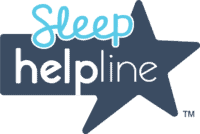TV and film characters seem to get narcolepsy at an alarming rate. Is all awareness good awareness? We had an amazing time speaking to Al Jean about featuring narcolepsy during “Every Man’s Dream,” Episode 1 of Season 27 of The Simpsons in 2015, and Anna Marr, an actor and writer living with narcolepsy, about developing a dark comedy series, “Walking through Peanut Butter,” based on her experiences navigating New York’s comedy scene with narcolepsy, in our Narcolepsy Nerd Alert broadcast, Narcolepsy Goes to Hollywood on May 26th, 2021.
The Narcolepsy Nerd Alert series invites listeners to dive deeper into specific topics relevant to living with narcolepsy. To explore more topics related to living with narcolepsy, visit our Narcolepsy Nerd Alert page and check out corresponding toolkits available to download for free.





